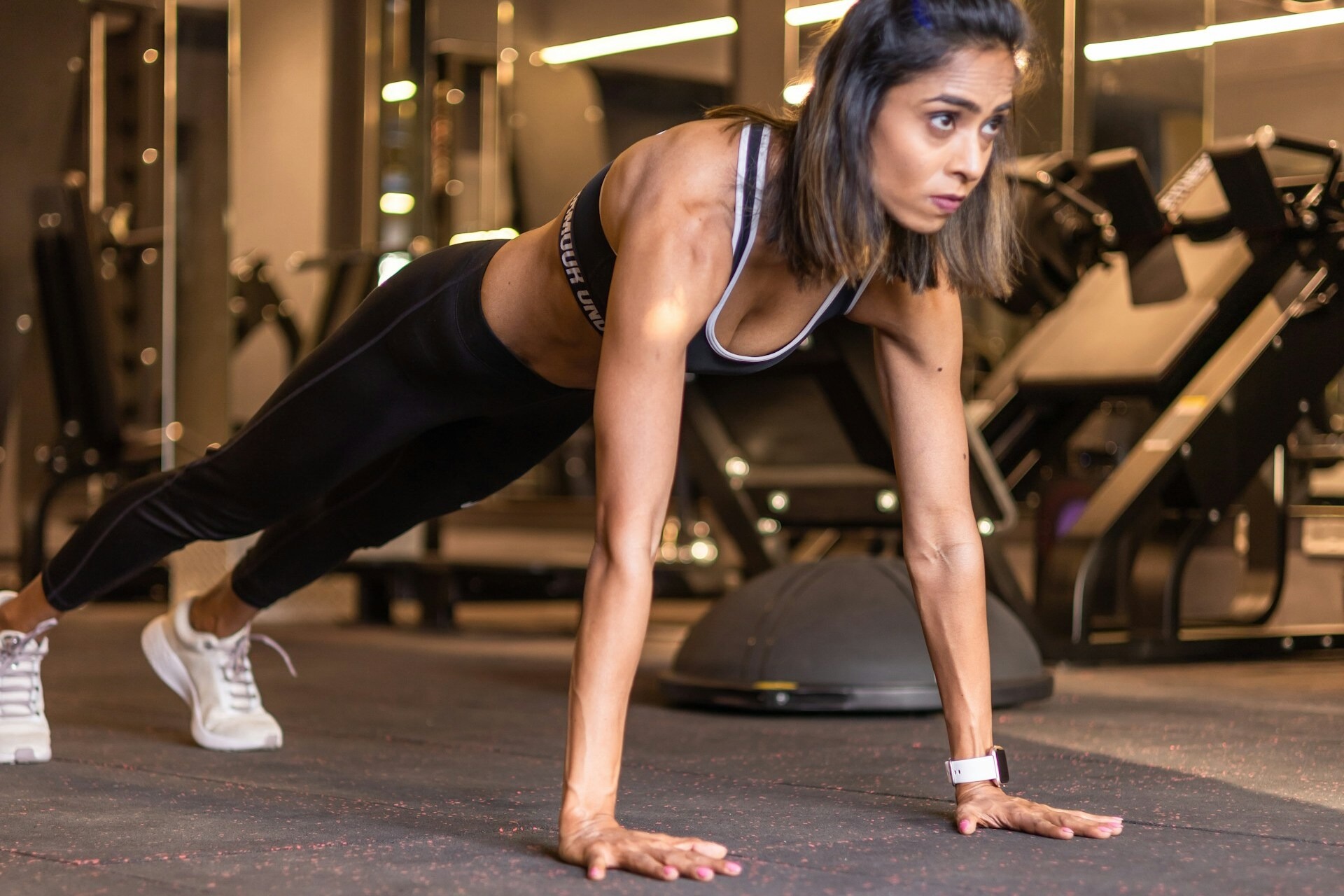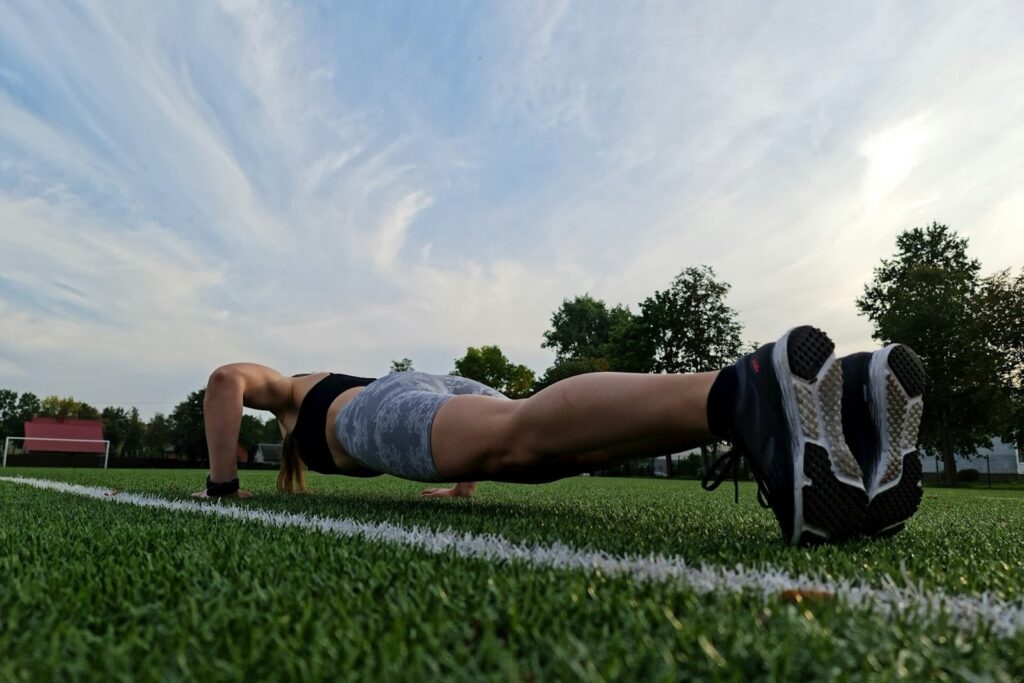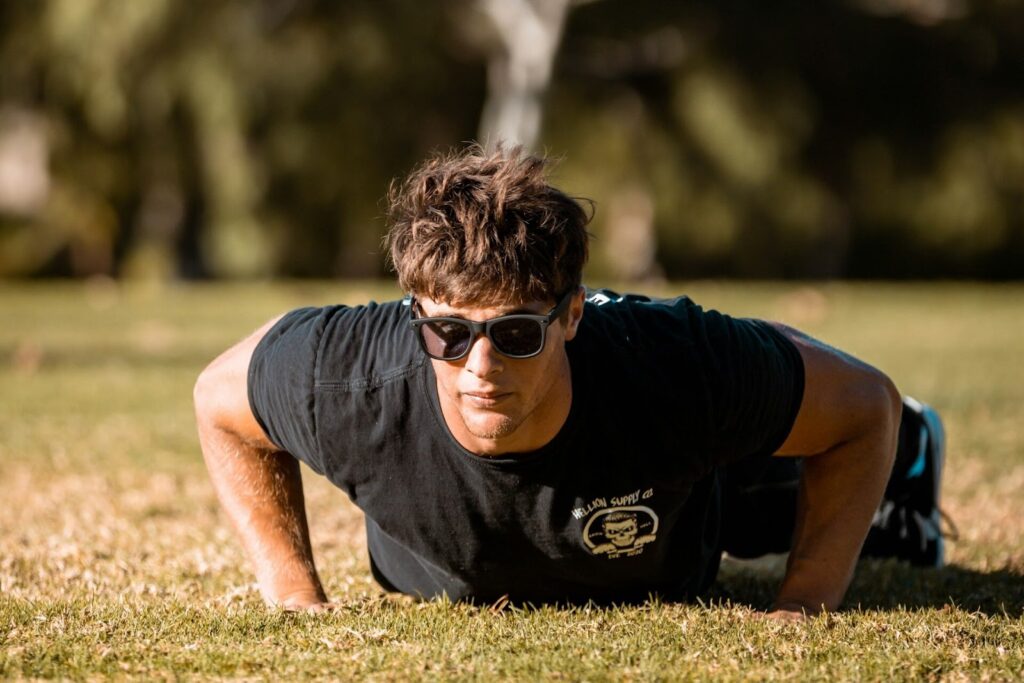
Body + Mind is reader-supported. We may earn an affiliate commission when you buy through some of the links on our site.
When searching for planks for beginners, it’s easy to feel intimidated. There are more things other than your body that can go sideways if you’re not prepared and locked in. However, it doesn’t change that this can be a beneficial exercise to add to your fitness routine.
Dive into the common mistakes that every beginner goes through and how you can correct them. The sooner you perfect the plank, the better your results will be.
Posture is everything when you’re trying to plank. Unfortunately, some people just try to imitate the common stance and call it a day. However, it’s more important to be mindful of how your body is positioned. Here’s a guide to keep in mind:
You can have the perfect posture for your upper and lower limbs, but you will struggle with planks for beginners if you constantly move your head around. The goal is for the top of your head to align with your heels during the entire plank.
To accomplish this, build a habit of keeping your neck still. Craning it up, down or sideways makes you more prone to that movement. Once you practice discipline in keeping it straight and aligned, your head will certainly follow suit.
The forearm plank is one of the most commonly known positions, popularly known as the default. However, you don’t have to jump into it right away. You can start with the knee plank, which focuses on holding your torso up and off the floor.
The knee plank is excellent for engaging the core while conditioning your upper limbs to handle a portion of your weight. Once you’ve gotten used to this position, you can try the straight-arm knee plank. It uses up more of your weight and helps you practice straightening your arms.

Another unfortunate mistake people make when trying planks for beginners is getting too obsessed with the time. Some people go as far as shifting away from their posture to check on their phone or a clock about how many seconds they’ve been holding the position.
To avoid this, you can place a stopwatch directly where your head is already positioned to look at to maintain positioning. You can also distract yourself from thinking about time too much by playing a song or a podcast during your workout.
Some fitness enthusiasts are capable of planking for three to five minutes. As a beginner, it’s nice to aspire for that as part of your workout goals. However, you can’t jump into that goal right away. It’s better to work gradually.
After all, your body won’t be used to the pressure, and you may unconsciously shift your posture just to go past your limit. You can begin planking for 30 seconds at a time first. Once you feel more comfortable, add about 10 seconds to that each time.
When you’re engaging your core, you may think that you’re squeezing better if you’re holding your breath. However, it can be dangerous to avoid breathing, especially once you’ve worked yourself up to planking for a whole minute or more.
Not breathing means elevating your heart rate and having so much pent-up air, which can inadvertently make you dizzy or nauseous. Take a deep breath as you get into position. Remind yourself to breathe through your mouth slowly to maintain pressure and release a breath.

The planks for beginners are generally appealing because of how static they all seem to be. It’s even recommended to hold your posture to get the most out of the exercise. However, small adjustments can make a difference in maintaining a stable position and engaging your core.
One of the best pieces of advice is to imagine that you’re actively pushing your body away from the floor. The subtle tightening and movement that this thought process has can be and extra push to maintain your form and alignment.
When you’re choosing an exercise, it’s important to know what it primarily targets. The Plank exercise can improve the trunk’s strength and muscular endurance. It also builds up your respiratory endurance.
While the plank is a full-body exercise that works on everything, you should not expect it to work on some areas, like your glutes. You can turn to squats for that instead.
If you want to target your core, it makes sense to have a core day that’s loaded with different exercises. However, you need to make sure that you’re not overexerting yourself with too many intensive core exercises.
Be selective about what goes into your routine. Aside from being able to work out other parts of your body, you’re giving your abdominal muscles a chance to recuperate.
Figuring out how to do certain core exercises is a challenge, but it’s so satisfying when you get around to doing them properly. Understand the techniques that will make planks for beginners even more of a breeze.
Have more tips? Share them with us on our social media pages!
Your email address will only be used to send you our newsletter, and at any time you may unsubscribe. For more information, see our Privacy Policy.